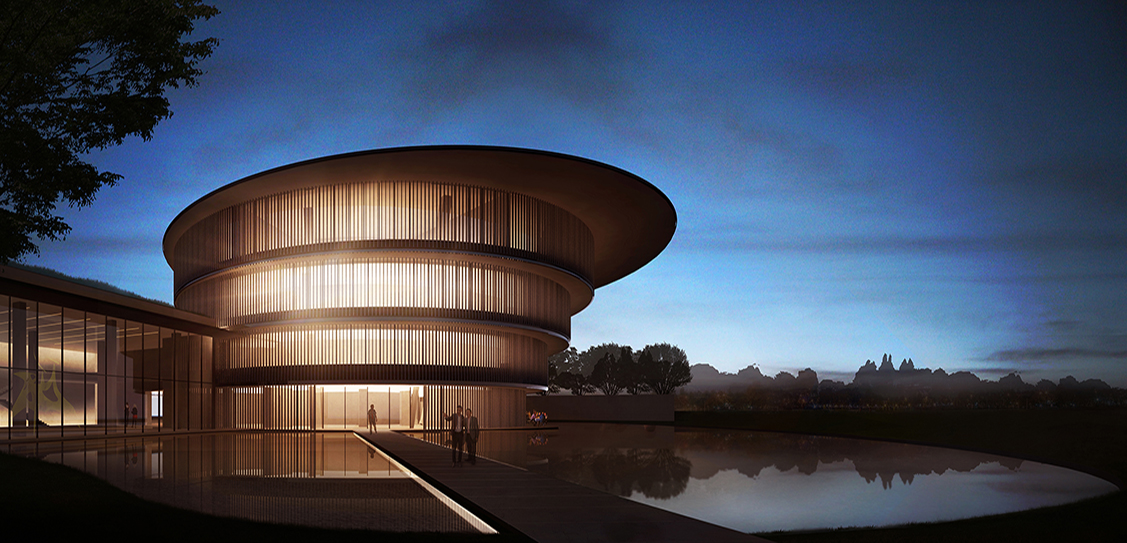HEM was conceived as a gateway into southern China’s regional Lingnan culture and arts, including Cantonese opera with theatrical face painting and distinctive Cantonese cuisine. Its collection of Lingnan School paintings showcases the indigenous style of painting originally created by artists living in the three coastal provinces of Guangdong, Canton, Guangxi and Hainan, an island in the south China sea.
Tadao Ando extensively researched China’s ancient history and Lingnan’s architecture to inform HEM’s design; Ando held a persistent attitude in cultural infusion, drawing inspiration from the local architectural and cultural context in Shunde. Named after the museum’s founder He Jianfeng, “He” in Chinese also carries multiple meanings, harmony, balance, fortune and union. Ando has drawn from these connotations and Lingnan architecture’s technique of spatial integration for HEM’s design.
In HEM’s design, Ando draws inspiration from ancient Chinese cosmology, philosophy, western style’s use of light and Lingnan’s terrain. Throughout western architectural history, architects have been skilful at the use of light such as those seen in churches; this has had a deep impression on Ando and his approach to this design. The central skywell floods each floor of exhibition spaces with natural light, creating spaciousness, clarity and a symbol of hope. The circular form gives a nod to the traditional Chinese architectural principles and creates a modern interpretation that can reinvigorate architectural heritage from both the east and west.
In the central skywell, a ‘double-helix’ pair of staircases takes visitors from the ground floor to the fourth floor – when two people simultaneously walk up or down the stairs, it creates a dynamic geometry of rhythm and the movement creates a kinetic human dialogue in itself. All floors of the exhibition spaces are circular except for the square gallery on the ground floor, which also accommodates an open plan bookstore and a café. Additionally, a 300m² flexible education space can double up as a place for quiet studying, socialising or events.
A pond wraps around the building, mimicking Lingnan’s heritage of waterside pavilions and as a symbol it subtly gestures its geographic location on the Pearl River estuary. Visitors can access the museum via a pathway, creating a journey of mindfulness, tranquillity and a moment for contemplation.



